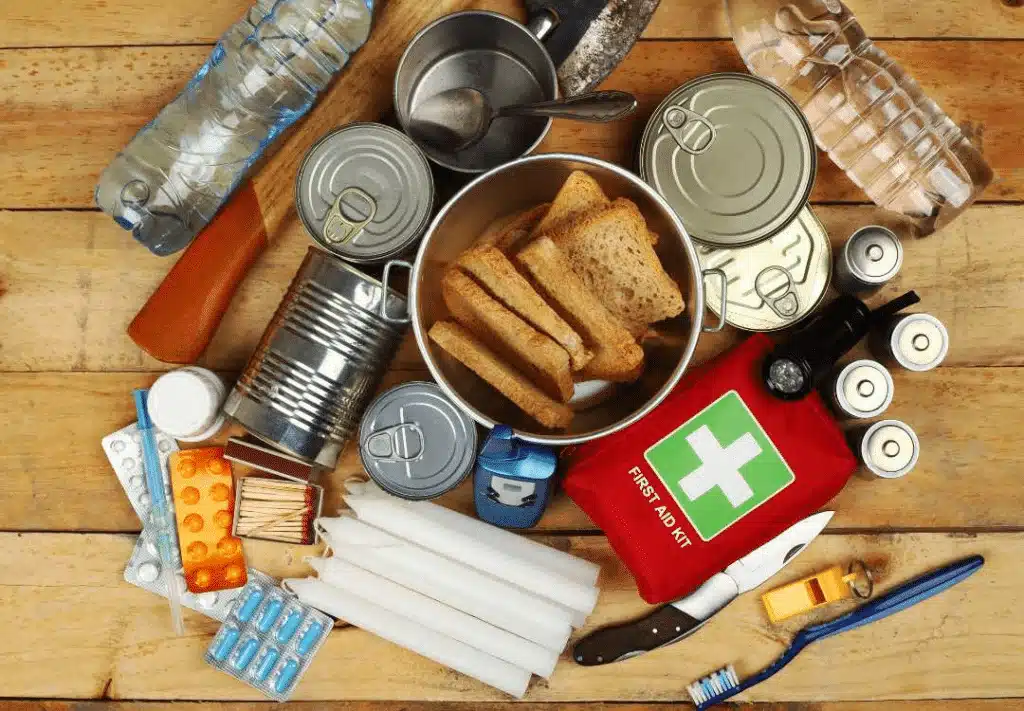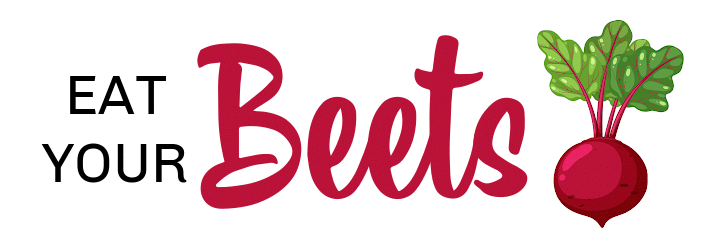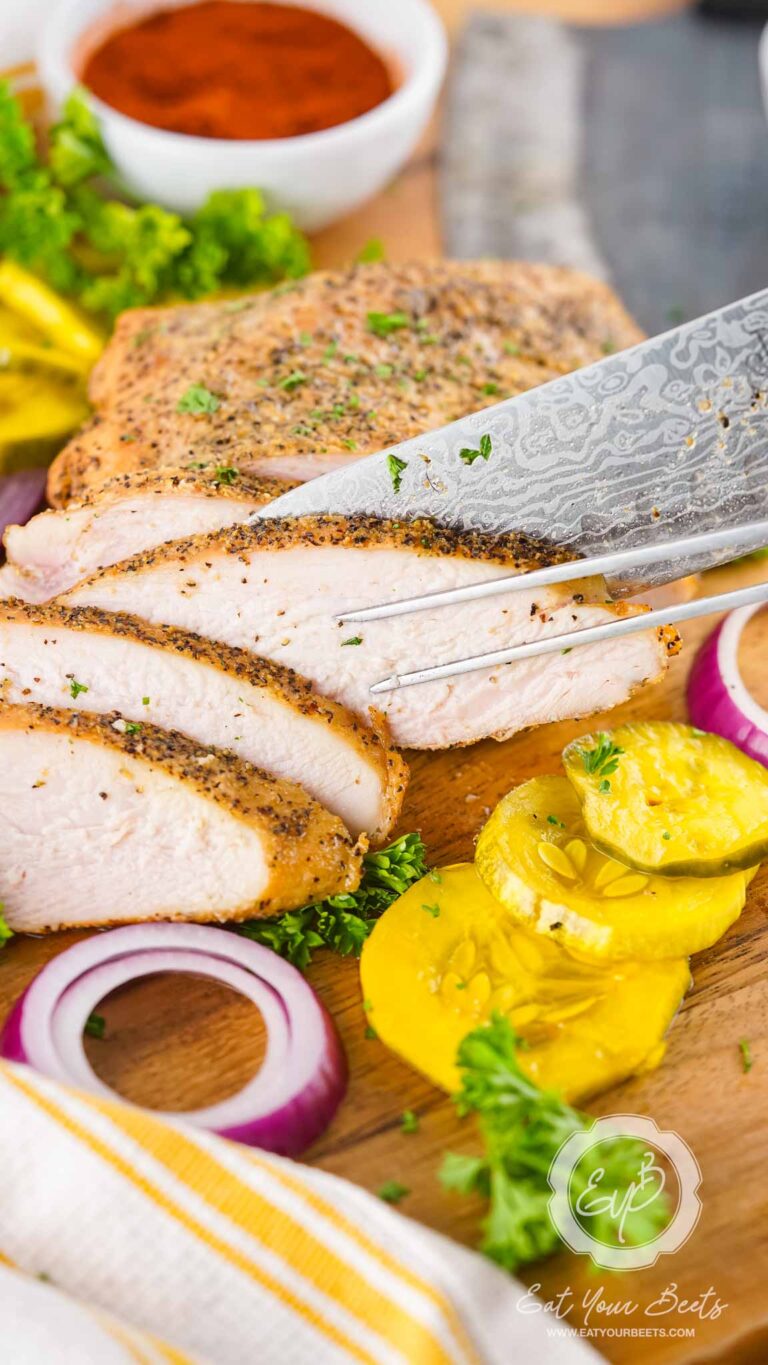What Is an Emergency Food Supply
It’s no secret that in times of emergency, having access to food is essential. But did you know that many disasters can call for an emergency food supply? In natural disasters (floods and earthquakes) and pandemics or civil unrest, being aware of the possibility of needing an emergency food supply is key to staying safe and secure during difficult situations.
In this blog post, we’ll cover what an emergency food supply should look like, as well as tips on how to create one so you are prepared in case a crisis strikes. Read on for more information about why having a well-stocked pantry is important!

Contents
What Is an Emergency Food Supply?
An emergency food supply is a stockpile of non-perishable food items that are stored in advance to provide sustenance and maintain health during unforeseen events such as natural disasters or emergencies.
The goal is to have enough food to maintain health and provide sustenance during an emergency situation when access to grocery stores or food supplies may be limited.
Why You Need an Emergency Food Supply
Having an emergency food supply is crucial for ensuring that you and your family have access to food during unforeseen circumstances. Whether it’s a natural disaster, pandemic, or economic crisis, having an adequate stockpile of non-perishable foods, water, and cooking supplies can provide a sense of security and peace of mind.
Considering rations emergency food bar can be a practical option for short-term emergencies. By being prepared, you can safeguard your well-being and that of your loved ones during times of uncertainty.
Importance of Emergency Food Supply in Times of Crisis
Natural disasters and pandemics can disrupt food supply chains, leading to food and water shortages. This is why having an emergency food supply is crucial during such times. Emergency food supplies provide individuals and families access to food and water when resources are scarce or inaccessible.
In addition, natural disasters can cause power outages that may last several days, which means that refrigerators and freezers won’t be functional and fresh food will spoil. An emergency food supply that includes non-perishable items with a long shelf life becomes critical.
Similarly, pandemics can restrict travel and movement, making it challenging to access grocery stores. By having an emergency food supply, individuals and families can ensure they have immediate access to essential supplies in an emergency.
Emergency food supplies should be tailored to meet specific dietary needs, and it’s important to store them in a secure place that’s easily accessible. Overall, emergency food supplies are essential for providing sustenance and security during natural disasters and pandemics.
Best Emergency Food Supply
There are numerous survival food kits and the best emergency food supplies that are available on the market, each offering different benefits and catering to various needs. Some of the best emergency food options include:
Mountain House
Mountain House is a reputable emergency food company that offers a wide range of freeze-dried emergency meals with a long shelf life. Their meals are easy to prepare, requiring only the addition of hot water, and come in a variety of tasty options.
Augason Farms
Augason Farms specializes in long-term food storage, providing various dehydrated and freeze-dried food, including fruits, vegetables, grains, and proteins. Their products are known for their quality, taste, and extended shelf life.
Patriot Supply
Patriot Supply offers a variety of emergency supplies, including freeze-dried meals, powdered eggs, and other essentials. Their products cater to different dietary preferences and have a long shelf life, making them reliable for emergency food storage.
Thrive Life
Thrive Life is another popular emergency food company that offers a range of freeze-dried and dehydrated food options. Their products are easy to store, have a long shelf life, and cater to various dietary preferences, including gluten-free foods and vegetarian options.
Building Your Emergency Food Supply
When building your emergency food supply, it is essential to consider several factors, including shelf life, nutritional value, dietary preferences, and storage requirements. Here are some tips for selecting the best emergency food options:
Shelf Life
Choose foods with a long shelf life to ensure that your emergency food supply remains edible and safe to consume over time. Look for items such as dried or freeze-dried foods, canned goods, and meals with extended expiration dates.
Nutritional Value
Select foods that provide essential nutrients, such as protein, carbohydrates, vitamins, and minerals. This will help ensure that your family stays well-nourished during an emergency.
Dietary Preferences
Consider your family members’ dietary preferences and restrictions when building your emergency food supply. Include gluten-free, vegetarian, or allergen-free options if necessary.
Items to Store for Emergency
In preparing for an emergency, it’s essential to have a list of items to store that will help you and your family maintain health and safety. Here are some of the crucial items to include in your emergency storage:
- Water: Store sufficient water to last at least three days. It is recommended to have one gallon per person per day.
- Food: Include non-perishable food items with a long shelf life, like canned goods, dried fruits, nuts, and freeze-dried or dehydrated foods. Store enough food to last at least three days.
- First Aid Kit: A well-supplied first aid kit should contain items such as bandages, gauze, antiseptic wipes, and prescription medications.
- Flashlights And Batteries: A reliable flashlight with extra batteries is crucial during power outages.
- Emergency Radio: An emergency radio can provide critical updates on weather conditions and evacuation orders.
- Hygiene Supplies: Store supplies like toilet paper, wet wipes, hand sanitizer, and soap to maintain hygiene during an emergency.
- Cash: Keep some cash on hand, as ATMs and credit card systems may be down during an emergency.
- Important Documents: Keep duplicates of vital documents such as birth certificates, passports and insurance policies in a water-resistant container.
It’s important to create a well-organized and easy-to-access emergency supply kit that can be quickly grabbed and taken with you in case of an evacuation. By storing these essential items, you can help ensure that you and your loved ones are prepared to cope with any emergency situation that may arise.
Foods That Should Be Avoided in Emergency Food Supplies
When preparing for an emergency, it’s important to choose the best emergency food supplies that have a long shelf life and can be stored safely for an extended period. However, not all foods are suitable for long-term food storage and should be avoided in emergency food supplies. Here are some foods to avoid:

- Fresh Fruits And Vegetables: These perishable items have a short shelf life and require refrigeration, making them unsuitable for long-term storage.
- Foods High In Moisture: Foods with high moisture content, such as cheese, bread, and crackers, can spoil quickly and attract bacteria and mould.
- Foods That Require Cooking: In emergency situations, access to cooking equipment may be limited, so it’s best to avoid foods that require preparation, such as raw meat and eggs.
- Foods With A Short Shelf Life: Foods with a short shelf life, such as milk and yogurt should be avoided as they can spoil quickly.
How to Store Your Emergency Food Supply
Proper storage is crucial to ensure the longevity and safety of your emergency food supply. Here are some guidelines and tips to help you store your food effectively.
Choose the Right Storage Location
Temperature Control
Select a cool, dry place to store your emergency food kits. A consistent temperature between 50°F and 70°F is ideal. Extreme temperature fluctuations can affect the shelf life and quality of your food.
Avoid Direct Sunlight
Keep your food supply away from direct sunlight, as it can cause food to spoil more quickly. Exposure to sunlight can also degrade the nutritional value of your stored food.
Elevated Storage
Store your food off the ground on shelves or pallets. This helps protect your supplies from water damage in case of flooding or moisture buildup.
Properly Package Your Food
Use Airtight Containers
Store food in airtight containers, such as plastic buckets with tight-fitting lids or vacuum-sealed bags. This helps protect your food from pests, moisture, and air.
Label and Date Your Containers
Clearly label individually packaged meals with the contents and the date of storage. This will make it easier to keep track of expiration dates and rotate your stock as needed.
Use Food-Grade Materials
When choosing containers for your emergency food supply, make sure they are made from food-grade materials. This helps ensure that your food remains safe and free from contaminants.
Organize Your Food Supply
Group Similar Items Together
Organize your food supply by grouping similar items together. This makes it easier to find what you need during an emergency and simplifies the process of rotating your stock.
Implement a First-In, First-Out (Fifo) System
Use a first-in, first-out system to rotate your food supply. When adding new items to your storage, place them behind older items so that you use the oldest food first.
Keep an Inventory List
Maintain an inventory list of your emergency food supply. This helps you keep track of what you have on hand, identify any gaps in your supply, and plan for future additions.
Regularly Inspect and Maintain Your Food Supply
Check Expiration Dates
Regularly inspect your emergency food supply for expired items. Replace any items that are nearing their expiration date to ensure that your supply remains fresh and safe to consume.
Monitor for Pests and Damage
Keep an eye out for any signs of pests or damage to your food containers for long term storage. To avoid additional harm, it is crucial to address any problems promptly.
Test and Sample Your Food Storage
Periodically test and sample your stored food to ensure that it remains palatable during climatic conditions and maintains its nutritional value.
How to Ensure the Best Emergency Supply
To ensure the best emergency food supply, consider selecting foods with a longer shelf life that are specifically designed for emergency storage. Ideal storage conditions include keeping food in a cool, arid place away from sunlight and moisture.
The use of oxygen absorbers can also help to extend the shelf life of emergency meals. It’s crucial to check the expiration dates regularly and rotate food supplies to ensure the food remains fresh and safe for consumption during an emergency.
By avoiding foods that don’t meet these criteria, you can ensure your emergency food supply is nutritious, safe, and effective in providing sustenance during times of crisis.
Common Mistakes to Avoid When Preparing an Emergency Food Supply
Preparing an emergency food supply is crucial in ensuring that you and your family are well-fed during unpredicted situations such as natural disasters or pandemics. However, there are common mistakes that people make when preparing their emergency food supplies. Here are some mistakes to avoid:
- Not Considering Personal Preferences Or Dietary Restrictions: It’s essential to consider personal preferences and any dietary restrictions when preparing an emergency food supply. This will help you ensure that everyone has access to food that they can eat and enjoy.
- Not Storing Enough Food: Ensure that you have enough food to last for at least three days for each person in your household. This will provide enough time for power to be restored, grocery stores to reopen, or help to arrive.
- Not Rotating Food Supplies: To ensure that food is fresh and safe for consumption, it’s important to rotate food supplies and check expiration dates regularly.
- Storing Too Much Junk Food: While comfort foods or snacks may provide temporary relief during a crisis, it’s essential to prioritize nutritious foods to maintain health and wellness.
- Relying Solely On Ready-Made Meals: Although convenient, relying solely on packaged or ready-made meals can result in a lack of nutritional diversity. It’s important to include a variety of foods in your emergency food supply.
- Not Storing Food Properly: Proper storage conditions such as cool, dry places away from sunlight and moisture must be considered to extend the shelf life of emergency food supplies.
By avoiding these typical slip-ups, you can ensure that your emergency food supply is effective in providing adequate nutrition and sustenance during a crisis.
Essential Amount of Food and Water for Each Person in an Emergency Supply Kit
In an emergency supply kit, each person should have at least three days worth of food and one gallon of water per day. Select non-perishable foods with a long shelf life and store enough food to provide 1,500 calories per day per person. Consider personal preferences and dietary restrictions when selecting food items.
The Benefits of an Emergency Food Supply
Peace of Mind
Knowing that you have enough food stored away to last for an extended period provides a sense of security and peace of mind. During an emergency, this practice can aid in minimizing stress and anxiety.
Self-Reliance
Having an emergency food supply means you won’t have to rely on external assistance, which may be scarce or delayed during a crisis. This self-reliance can be empowering and improve your ability to navigate difficult situations.
Nutritional Needs
In the event of an emergency, having access to nutritious food is essential for maintaining good health. A well-stocked emergency food supply ensures that you and your family will have the necessary nutrients to stay healthy.
What to Do When Your Emergency Food Supply Runs Out
In an emergency situation, it’s critical to have an emergency food supply that can nourish you until help arrives or normal services are restored. However, if your emergency food supply runs out, there are a few things you can do to ensure that you and your loved ones don’t go hungry:
- Conserve Your Remaining Supplies: If possible, ration your remaining supplies to make them last longer. Eat smaller portions and avoid snacking to make sure that you have enough food to last until additional help arrives.
- Look For Alternative Food Sources: If you’re in a natural environment, look for edible plants, fruits, or vegetables. Ensure that you know how to identify edible plants correctly before consuming them.
- Seek Help From Emergency Services: Contact emergency responders, government officials, or local relief agencies for help. They may be able to provide emergency food supplies or information on where to find additional resources.
- Connect With Your Community: Reach out to your neighbors and community members to pool resources. Share food and other essential supplies to help each other get through the crisis.
- Be Resourceful: Use your creativity and resourcefulness to create meals with what you have on hand. For example, you could make soups or stews using canned goods, rice, or other grains.
Remember that during an emergency, it’s essential to remain calm and focused. By taking steps to conserve your remaining supplies, looking for alternative food sources, or seeking help from emergency services or the community, you can make that you and your loved ones stay safe, healthy, and well-fed.
Build a Food Supply Today
In conclusion, having an emergency food supply on hand can make a significant difference during unexpected situations. Whether it’s a natural disaster or a personal crisis, having non-perishable food items that can provide essential nutrients and energy will ensure that you and your loved ones are well-fed and taken care of until help arrives.
Remember to include food items that meet your dietary requirements and preferences, as well as any special needs of family members. With a well-thought-out emergency food supply, you can have peace of mind knowing that you are prepared for any unforeseen situation.






